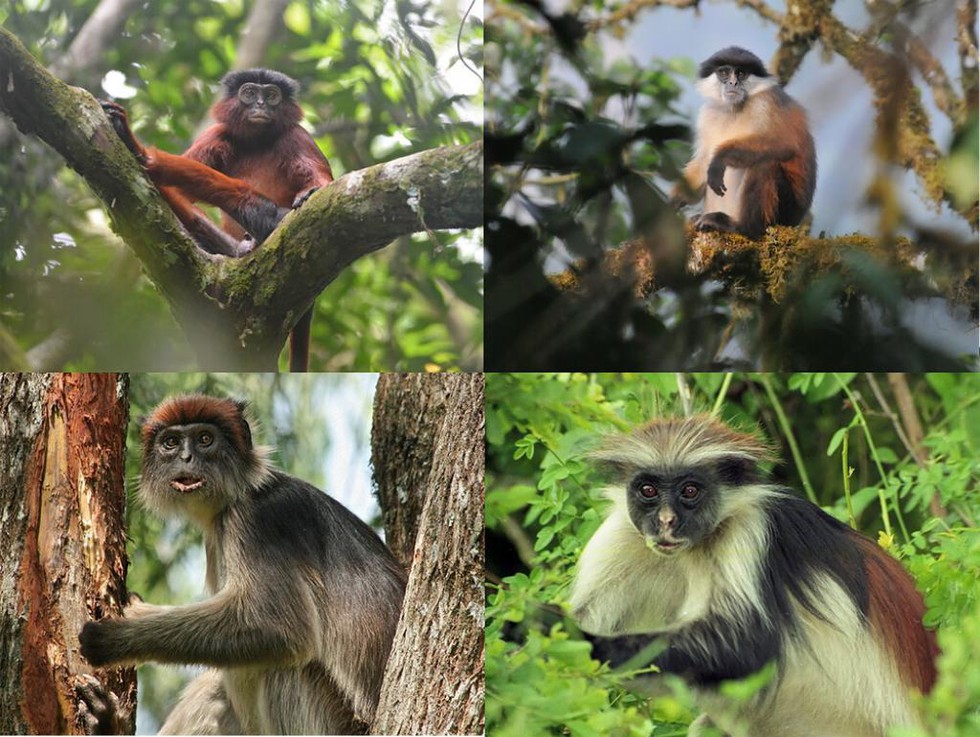
About Red Colobus:
- These are a rare group of imperilled monkeys spread across Africa, are primary indicators of biodiversity.
- Red colobus monkeys are one of two major simian groups globally.
- Colobines are primarily leaf-eaters, as compared to the cercopithecines, which are omnivores and thus include animals in their diet as well.
- Colobines also include the langurs of south and southeast Asia besides Africa’s colobus (olive and black-and-white besides red) monkeys.
- Distribution: Ranging from forests in Senegal to the Zanzibar Archipelago.
- Most red colobus are facing extinction, making them the most threatened group of non-ape primates in mainland Africa.
- More than half of the 18 distinct forms of red colobus monkeys (scientists are unclear about how many species there are) are classified as Endangered or Critically Endangered on the IUCN Red List of Threatened Species.
- Threats:
- Hunting for trade and local subsistence.
- Habitat loss, degradation and fragmentation due to logging, mining, charcoal production, infrastructure development and conversion of forest to farms and agriculture plantations.
Initiative to conserve Red Colobus
- The Red Colobus Conservation Action Plan, initiated by the International Union for Conservation of Nature (IUCN) Species Survival Commission Primate Specialist Group and the African Primatological Society.
- The action plan aims to make red colobus a priority conservation target, which will help to secure Africa's tropical forests and reduce unsustainable hunting for wild meat.
- A Red Colobus Working Group (RCWG) has been formed to guide implementation of the action plan and a Red Colobus Conservation Network (RCCN) has been created to promote communication, capacity-building and monitoring of red colobus conservation efforts.
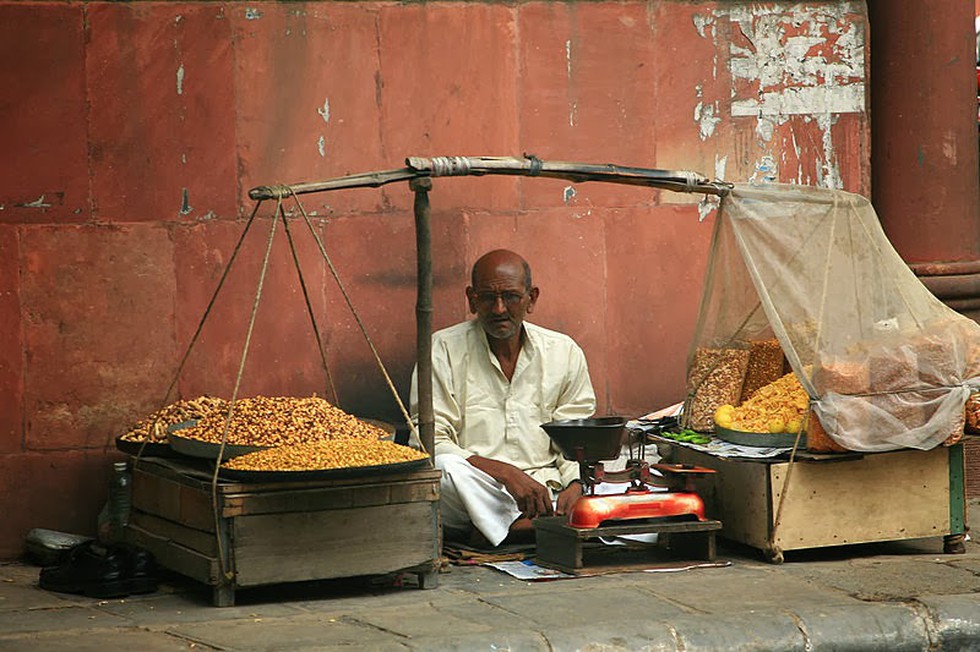
About Street Vendors (Protection of Livelihood and Regulation of Street Vending) Act, 2014:
- It was enacted in order to legalise the vending rights of street vendors (SVs).
- It aimed to protect and regulate street vending in cities, with State-level rules and schemes, and execution by Urban Local Bodies (ULBs) through by-laws, planning, and regulation.
- The Act clearly delineates the roles and responsibilities of both vendors and various levels of government.
- It commits to accommodating all ‘existing’ vendors in vending zones and issuing vending certificates (VCs).
- It establishes a participatory governance structure through Town Vending Committees (TVCs).
- It mandates that street vendor representatives must constitute 40% of TVC members, with a sub-representation of 33% of women SVs.
- These committees are tasked with ensuring the inclusion of all existing vendors in vending zones.
- Additionally, the Act outlines mechanisms for addressing grievances and disputes, proposing the establishment of a Grievance Redressal Committee chaired by a civil judge or judicial magistrate.
- It provides that the States/ULBs conduct a survey to identify SVs at least once every five years.
3. Peucetia chhaparajnirvin
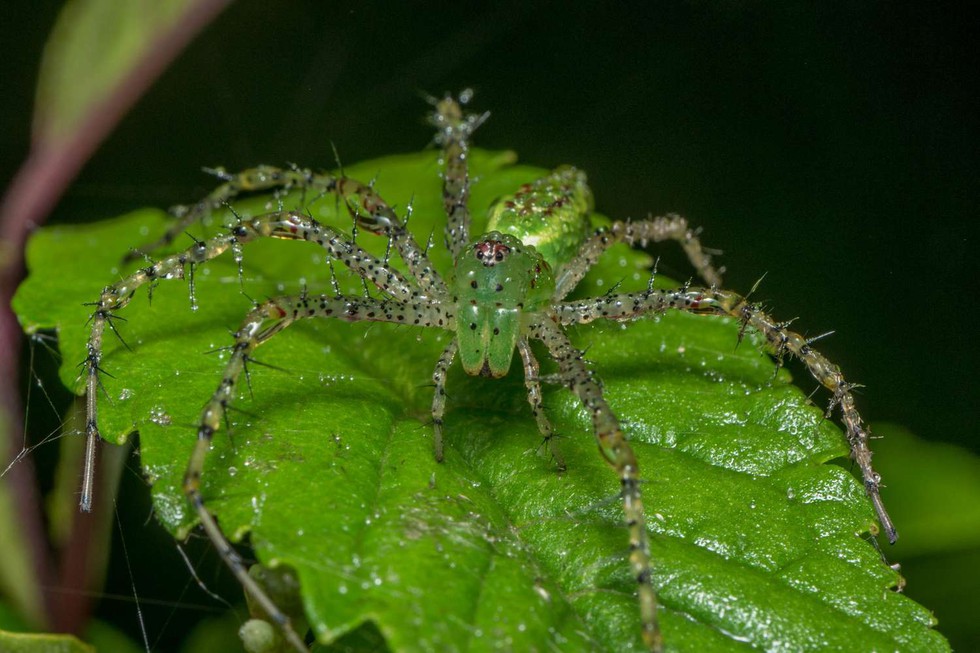
About Peucetia chhaparajnirvin:
- It is a new species of green lynx spider. The spider was found in Tal Chhapar Wildlife Sanctuary in Churu district of Rajasthan.
- The spider species has been named Peucetia chhaparajnirvin after the area in Rajasthan, Tal Chhapar, where it was discovered.
- This spider is found on the green leaves of the Vachellia nilotica (babul) tree.
- Their green hue aids in blending with their surroundings and ambushing prey, while their long legs allow them to move quickly.
- This spider is nocturnal and feeds on small insects.
What are Lynx Spiders?
- Lynx spiders, (family Oxyopidae) are any of several groups of active spiders(order Araneida) that do not build a nest or web but capture their prey by pouncing upon them.
- They are among the major predators of insects occurring in low shrubs and herbaceous vegetation.
- The eyes are arranged in a hexagon, and the abdomen usually tapers to a point.
- Many Lynx spider species have colorfully striped abdomens and spiky legs.
4. Front-running

About Front-running:
- It is when a broker or an investor joins a tradebecause they have pre-existing non-public information concerning a significant transaction that may change the asset’s price, equity, or derivative to obtain economic benefits.
- It is also known as forward-trading or tailgating. It is illegal in India.
- Front-running can occur in various forms and contexts, including the stock market, commodities market, and other financial markets.
- The strategies commonly used to front-run trades are the Buy-Buy-Sell (BBS) trading pattern and the Sell-Sell-Buy (SSB) trading pattern.
- What is Buy-Buy-Sell (BBS) trading pattern?
- In this trade pattern, the alleged front-runner, by using the non-public information regarding an impending buy order of the big client, places his buy order before the big client's buy order.
- As and when the big client places a buy order, the price of the security rises, and the alleged front-runner sells the securities bought earlier.
- In this way, at the raised price, the alleged front-runner makes a profit.
- What is the Sell-Sell-Buy (SSB) trading pattern?
- In this trading pattern, the alleged front-runner by using the non-public information regarding an impending sell order of the big client, places his sell orders before the big client's sell order.
- When the big client places a sell order the price of the security falls which allows the alleged front-runner to buy back the securities at a lower price to meet his obligations which he had created earlier by selling securities.
Difference Between Front Running and Insider Trading:
- Insider trading involves trading securities based on material, non-public information about a company. Insiders, such as company executives, employees, or individuals with access to confidential information, use this privileged information to make trades for personal gain.
- On the other hand, Front Running involves trading securities based on knowledge of pending orders or anticipated market movements. It typically occurs when a broker or trader exploits their position or advanced expertise to prioritize their trades over their clients or the general public.
5. Look Out Circulars (LOCs)

About Look Out Circulars (LOCs):
- It is an instrument issued by the government as a directive to its immigration authorities to restrict and regulate the physical movement of a person.
- The immigration department is tasked to stop any such individual against whom such a notice exists from leaving or entering the country.
- Law enforcement agencies often use LOCs as a coercive measure to stop any individual wanted or under suspicion by the police or an investigating agency from leaving or entering the country through designated land, air, and sea ports.
- LOCs are usually issued by the police, intelligence agencies, or other government agencies authorised by the Ministry of Home Affairs(MHA).
- LOC does not have express statutory backing in legislation, the power to issue LOCs and their regulation stems from the executive in the form of an Office Memorandum issued by the MHA in 2021, which provides consolidated guidelines for opening LOCs against Indian citizens or foreigners.
- Guidelines:
- The guidelines categorically provide that LOCs can only be opened in criminal or penal cases, and the reason for the LOC must be indicated with the issue of the circular.
- If there is no criminal or penal case pending, the LOC cannot be issued, and agencies can only request that they be informed of departure or arrival.
- However, the guidelines provide that in exceptional cases, an LOC may be issued against an individual even when the case is not a criminal case. This is in specified circumstances, such as when it is detrimental to the “sovereignty, or security, or integrity of India”, the “bilateral relations with any State”, or to the “strategic and economic interests of India”.
- LOCs are also permitted in cases where the individual is likely to engage in terrorism or offences against the State or when such departure would not be “in the larger public interest”.
- LOCs cannot be issued unless basic details — including name/parentage, passport number, and date of birth — are available, and such requests must be constantly monitored.
- It is the responsibility of the originator to constantly review the LOC requests and proactively provide additional parameters to minimise harassment to genuine passengers.
- It is also required that any LOC issued must be reviewed on a quarterly and annual basis by agencies that request such restrictions, and the result of the review must be informed to the MHA.
- MHA has categorically transferred the legal consequences of issuing an LOC to the originating agency, even though such OMs are issued by the Bureau of Immigration.
- The power to issue such OMs and LOCs is sourced from The Passports Act, 1967, the key legislation for the grant of passports, travel documents, and “endorsements” to travellers at the time of emigration or immigration.
6. Patachitra Painting
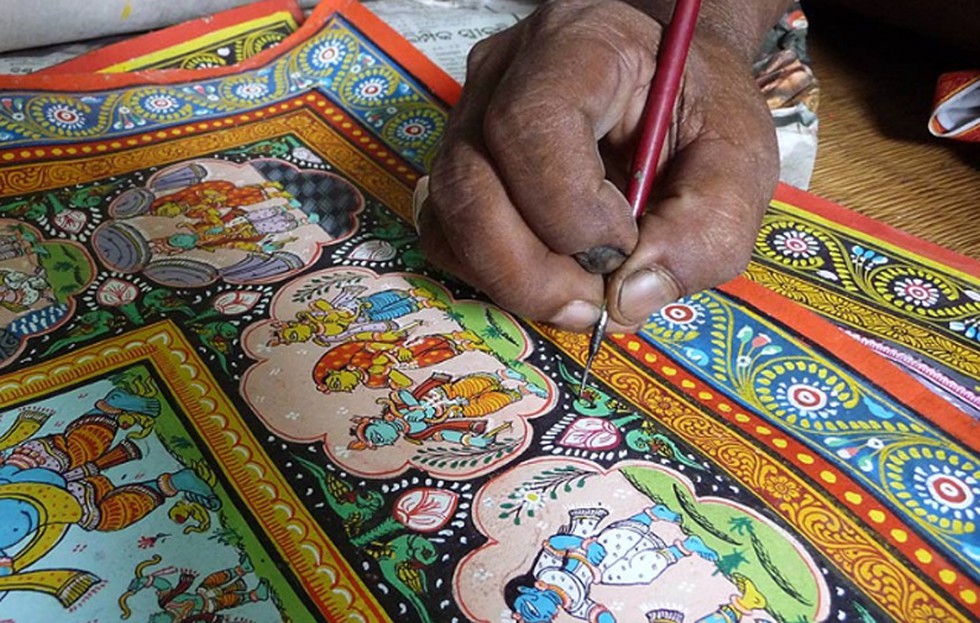
About Patachitra Painting:
- It is a general term for traditional, cloth-based scroll painting based in the eastern Indian states of Odisha and West Bengal. It is believed to have originated as early as the 12th century.
- In the Sanskrit language, "Patta" literally means "cloth" and "Chitra" means "picture".
- It is known for its intricate details as well as the mythological narratives and folktales inscribed in it. Most of these paintings depict stories of Hindu deities.
- It is one of the ancient artworks of Odisha, originally created for ritual use and as souvenirs for pilgrims to Puri, as well as other temples in Odisha.
- Patachitras are a component of ancient Bengali narrative art, originally serving as a visual device during the performance of a song.
- Making:
- Pattachitra paintings are made on a special canvas where cotton sarees are layered with tamarind paste and then coated with clay powder.
- Traditionally, cotton canvas was used; now, both cotton and silk canvas are used for paintings.
- Once the canvas becomes sturdy, colours are filled in directly without any initial sketches. It is a tradition to complete the borders of the painting first.
- All colours are obtained from natural sources like lamp soot and powdered conch shells.
- Each painting can take up to weeks or months to be prepared.
7. Eggshell skull rule

About Eggshell skull rule:
- It is a common law principle applied in civil litigation. It states that all victims should be fully compensated for their losses, even in situations where the victim was more-susceptible to injury due to a predisposing condition or preexisting injury.
- It ensures that a defendant (the person being sued) cannot escape liability for exacerbating a pre-existing condition due to their negligence.
- The eggshell skull doctrine is named after a hypothetical situation where a person with a fragile skull, akin to an eggshell, suffers a head injury.
- If the victim’s skull fractures more easily than the average person, the defendant is still fully liable for all resulting damages, despite the victim’s unusual vulnerability.
- Despite its name, the eggshell skull rule applies to all types of injuries, including physical, emotional, and psychological harm.
- The rule is applied for claiming an enhanced compensation — for damage that is more than what could have been ordinarily anticipated to be caused by the defendant.
- The eggshell skull rule has consequently also been referred to as the ‘thin skull rule’ in many of the cases.
- Origin: The origins of the eggshell skull rule are most often traced back to an 1891 Vosburg v. Putney case in Wisconsin, US.
8. Goldman Environmental Prize

About Goldman Environmental Prize:
- It recognizes individuals for sustained and significant efforts to protect and enhance the natural environment, often at great personal risk. It is also known as the Green Nobel.
- It recognizes grassroots environmental heroes from roughly the world’s six inhabited continental regions: Africa, Asia, Europe, Islands & Island Nations, North America and South & Central America.
- The Goldman Prize views “grassroots” leaders as those involved in local efforts, where positive change is created through community or citizen participation.
- The first Goldman Environmental Prize ceremony took place on April 16, 1990. It was timed to coincide with Earth Day.
Key facts about Hasdeo Aranya region:
- It is a sprawling forest in the northern part of Chhattisgarh which is known for its biodiversity and also its coal deposits.
- The forest falls under Korba, Surajpur and Sarguja districts with sizeable tribal population. The Hasdeo River, a tributary of Mahanadi, flows through it.
- It is the largest un-fragmented forests in Central India consisting of pristine Sal (Shorea robusta) and teak forests.
9. La Cumbre volcano
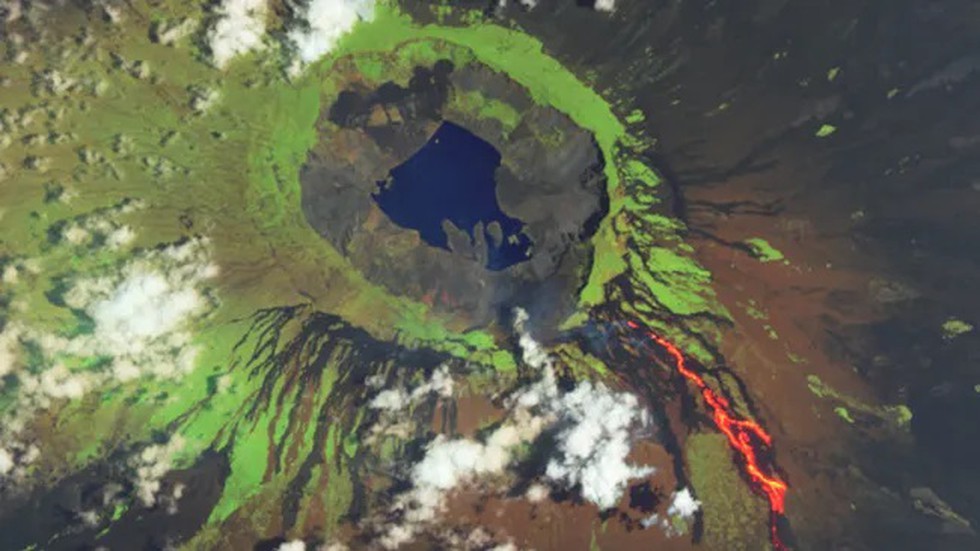
About La Cumbre volcano:
- It is located on Fernandina Island – the third largest island in the Galápagos Islands.
- It lies directly atop the mantle plume, or hot spot, that produced all of the Galápagos Island. It is located around 1,125 kilometres off mainland Ecuador and erupted for the first time since 2020.
- The volcano has a large crater, or caldera, at its summit that harbors a permanent crater lake. This lake attracts a wide variety of animals including tens of thousands of Galápagos land iguanas (Conolophus subcristatus) that lay their eggs in nests within the caldera.
Key facts about Galápagos land iguana
- It is one of three species of land iguana endemic to the Galapagos Islands (the others being the Santa Fe land iguana and the Galapagos pink land iguana).
- It is a very large species of lizard in the family Iguanidae. It is primarily an herbivores species.
- This large cold-blooded reptile has a mutualistic relationship with finches, which can often be seen sitting on their backs, picking ticks from between their scales.
- It is active during the day spending their time foraging or basking on rocks; at night they sleep in burrows.
- Conservation status
- IUCN: Vulnerable
10. Thrombosis with Thrombocytopenia Syndrome
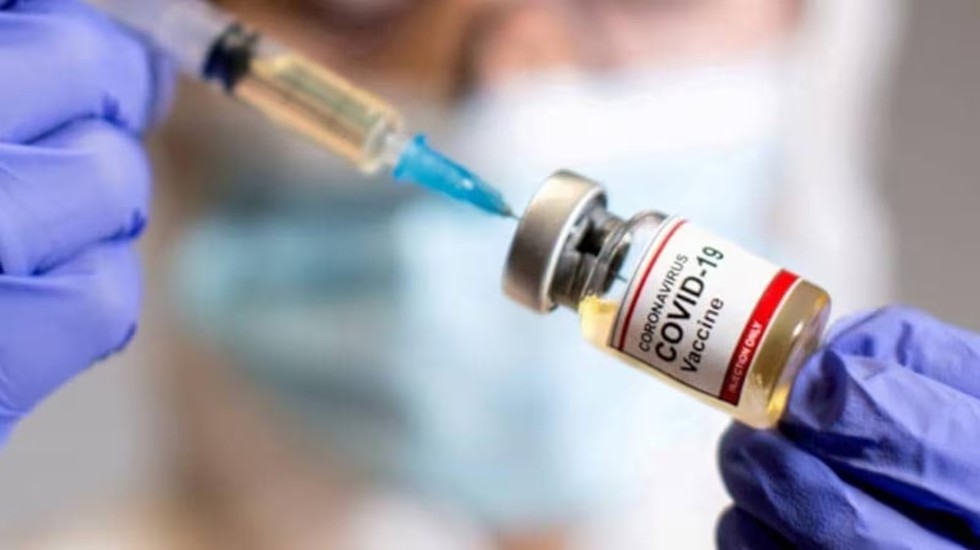
About Thrombosis with Thrombocytopenia Syndrome:
- It is characterized by blood clots (thrombosis) combined with low levels of platelets (thrombocytopenia), which are necessary for blood clotting.
- It often involves unusual blood clot locations, such as in the brain (cerebral venous sinus thrombosis) or abdomen.
- Symptoms of TTS: Severe or persistent headaches, blurred vision, Shortness of breath, Chest pain, Leg swelling, Persistent abdominal pain and Easy bruising or tiny blood spots under the skin beyond the injection site etc.
- It is classified into two tiers based on the location of the blood clot and the severity of the symptoms.
- Tier 1:
- Uncommon site of thrombosis (like the brain-cerebral venous sinus thrombosis or the gut such as splanchnic vein, associated with bowel ischaemia and surgery, portal vein or other rare venous and arterial thromboses).
- Thrombosis in more common locations (deep vein thrombosis or pulmonary embolism).
- Platelet count is less than 1,50,000 per microlitre.
- A positive anti-PF4 ELISA result is supportive, but not required for diagnosis.
- Tier 2:
- Common sites of thrombosis include leg or lungs (venous thromboembolism, deep vein thrombosis, pulmonary embolism).
- Platelet count is less than 1,50,000 per microlitre.
- A positive anti-PF4 ELISA result is required.
- Tier 1 TTS carries a higher risk of mortality and morbidity than Tier 2. Tier 1 could be more common among younger age groups.
11. Essential Programme on Immunization

About Essential Programme on Immunization:
- It was launched as the Expanded Programme on Immunization (EPI) by World Health Organisation in 1974 to ensure that all children, in all countries, benefited from life-saving vaccines.
- It has evolved into what is now commonly known as the Essential Programme on Immunization.
- Disease covered (Total 13):
- Initially this programme focused on protection against six childhood vaccine-preventable diseases namely Bacillus Calmette-Guérin (BCG), diphtheria, pertussis, tetanus, polio, and measles.
- Later on WHO added 7 more disease under this initiative Haemophilus influenzae type B (Hib), Hepatitis B (HepB), rubella, pneumococcal disease (PNC), rotavirus (Rota), human papillomavirus (HPV) and COVID-19 (for adults).
India’s Universal Immunization Programme (UIP)
- India launched the EPI in 1978, which was later renamed as the Universal Immunization Programme (UIP) in 1985.
- Objectives:
- To rapidly increase immunization coverage.
- To improve the quality of services.
- To establish a reliable cold chain system to the health facility level.
- Monitoring of performance.
- To achieve self-sufficiency in vaccine production.
- Eligibility:
- All beneficiaries’ namely pregnant women and children can get themselves vaccinated at the nearest Government/Private health facility or at an immunization session site (Anganwadi centres/ other identified sites) near to their village/urban locality on fixed days.
- The UIP covers all sections of the society across the country with the same high quality vaccines.
- Under UIP, immunization is providing free of cost against 12 vaccine preventable diseases.
- Nationally against 9 diseases - Diphtheria, Pertussis, Tetanus, Polio, Measles, Rubella, severe form of Childhood Tuberculosis, Hepatitis B and Meningitis & Pneumonia caused by Hemophilus Influenza type B.
- Sub-nationally against 3 diseases - Rotavirus diarrhoea, Pneumococcal Pneumonia and Japanese Encephalitis; of which Rotavirus vaccine and Pneumococcal Conjugate vaccine are in process of expansion while JE vaccine is provided only in endemic districts.


























































































































































.png)
.png)
.png)
.png)
.png)


.png)
.png)
.png)





.png)
.png)






.png)
.png)
.png)
.png)
.png)
.png)
.png)
.png)
.png)

.png)







.png)
.png)


.png)
.png)
.png)


.png)

.png)
.png)





.jpg)

.png)
.png)


.png)

.png)
.png)
.png)

.jpg)

.jpg)


.png)

.png)
.png)
.png)
.png)
.png)
.png)
.png)
.png)
.png)
.png)




.png)

.png)





.png)
.png)
.png)
.png)
.png)
.png)
.png)
.png)
.png)
.png)
.jpg)
.jpg)

.png)
.png)
.png)
.png)
.png)
.png)
.png)
.png)
.png)
.png)
.png)
.png)
.png)
.png)
.png)
.png)
.png)
.png)
.png)
.png)
.png)
.png)



.png)
.png)

.jpg)
.jpg)


.jpg)
.jpg)
.jpg)
.jpg)
.jpg)

.jpg)








.jpg)
.jpg)
.jpg)
.jpg)
.jpg)

















.jpg)
.jpg)







.jpg)


















.jpg)
.jpg)






























































































.jpg)
.jpg)


























.jpg)

.jpg)










.jpg)








.jpg)




.jpg)










.jpg)


















.jpg)












































.jpg)














.jpg)
.jpg)
.jpg)





.jpg)

.jpg)
.jpg)





































































.jpg)


































.jpg)
.jpg)
















































.jpg)












.jpg)


.jpg)




.jpg)
.jpg)
.jpg)

.jpg)
.jpg)
.jpg)
.jpg)

.jpg)
.jpg)
.jpg)

.jpg)
.jpg)
.jpg)
.jpg)
.jpg)
.jpg)
.jpg)
.jpg)

.jpg)


.jpg)
.jpg)
.jpg)
.jpg)
.jpg)
.jpg)
.jpg)
.jpg)
.jpg)
.jpg)











.jpg)
.jpg)





.jpg)
.jpg)
.jpg)
























.jpg)
























.jpg)









.jpg)
.jpg)







.jpg)
.jpg)









































.jpg)
.jpg)
.jpg)
.jpg)
.jpg)

.jpg)
.jpg)
.jpg)
.jpg)
.jpg)


.jpg)
.jpg)
.jpg)
.jpg)
.jpg)

.jpg)
.jpg)
.jpg)
.jpg)
.jpg)
.jpg)
.jpg)
.jpg)
.jpg)
.jpg)
.png)

.png)
.png)

.png)
.png)
.png)
.png)


.jpg)
.jpg)

.jpg)
.jpg)
.jpg)

.png)
.png)
.png)
.png)
.png)
.png)
.png)

.png)
.png)
.png)
.png)
.png)
.png)
.png)
.png)
.png)
.png)





































































-min.png)



.png)




.png)








































